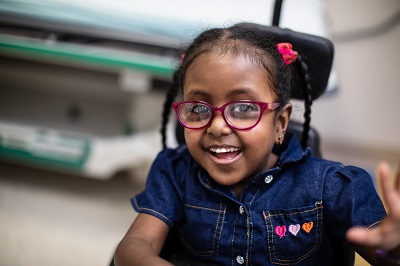Condition
Juvenile Dermatomyositis
What You Need to Know
Juvenile dermatomyositis (JDM) is a rare disease that causes muscle inflammation and a skin rash.
Key Symptoms
Common symptoms of juvenile dermatomyositis may include:
- Fever
- Rash
- Muscle weakness
- Lack of energy
Diagnosis
Doctors typically diagnose juvenile dermatomyositis by:
- Blood tests
- Electromyelogram (EMG)
- MRI
- Muscle and skin biopsy
- Nailfold capillaroscopy
Treatment
There is no known cure for JDM. But the symptoms can be managed with:
- Medicines
- Physical and occupational therapy
- An exercise program
- Sunscreen
- Nutrition
- Supplements and vitamins
Schedule an Appointment
Our pediatric specialists provide personalized care for your child’s physical, mental and emotional health needs. Meet the providers who treat brain tumors and schedule an appointment today.
Frequently Asked Questions
What is juvenile dermatomyositis?
What causes juvenile dermatomyositis?
What are the symptoms of juvenile dermatomyositis?
How is juvenile dermatomyositis diagnosed?
How is juvenile dermatomyositis treated?
What are the complications of juvenile dermatomyositis?
How should I help my child live with juvenile dermatomyositis?
How do you manage juvenile dermatomyositis?
When should I call my child’s healthcare provider?

Rheumatology Treatment at Children's National Hospital
Pediatric specialists at Children's National Hospital in Washington, D.C., have the expertise to diagnose, treat and manage autoimmune and inflammatory disorders in a growing child's muscles, tissues and joints. Discover more about the treatments we offer.


Help Kids and Make a Difference
Invest in future cures for some of life's most devastating diseases. Give today to help more children grow up stronger.

Meet the Providers Who Treat Juvenile Dermatomyositis
Departments that Treat Juvenile Dermatomyositis

Neuromuscular Medicine Program
The Neuromuscular Medicine Program leverages the expertise of a multidisciplinary teams, cutting-edge research and innovative technologies to care for a spectrum of neuromuscular conditions affecting children from infancy to age 21.




